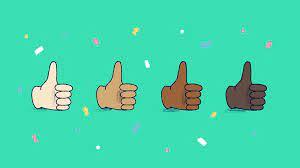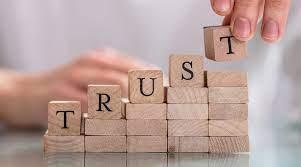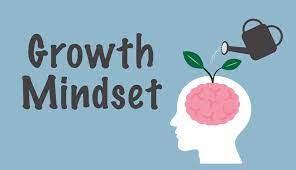7 keys to create psychological safety at work
Curated from: bigthink.com
Ideas, facts & insights covering these topics:
13 ideas
·1.99K reads
15
Explore the World's Best Ideas
Join today and uncover 100+ curated journeys from 50+ topics. Unlock access to our mobile app with extensive features.
7 keys to create psychological safety at work
Psychological safety plays a key role in fostering innovation and collaborative group dynamics where all team members feel comfortable being themselves.
psychological safety at work
In psychologically safe teams, employees feel accepted and respected. Psychological safety also helps foster a more inclusive work environment, which opens the door to greater creativity, innovation, and increased employee retention.
24
367 reads
What is psychological safety?
A team climate characterized by interpersonal trust and mutual respect in which people are comfortable being themselves.
Here are five dynamics for high-functioning teams:
- Dependability: Workers count on one another to do high-quality work.
- Structure & clarity: Roles, goals, and execution plans for the team are clear.
- Meaning of work: Workers are doing something that is personally important to each of them.
- Impact of work: Workers believe the work they’re doing matters.
- Psychological safety: Workers can take risks on the team without feeling insecure or embarrassed.
25
248 reads
The four stages of psychological safety
1. Inclusion safety: Members feel accepted as a part of the team – they’re wanted, appreciated, and don’t feel excluded from the group.
2. Learner safety: Team members are able to ask questions, experiment, make mistakes, admit when they make mistakes, and even ask for help.
3. Contributor safety: Members feel safe to offer their own ideas without fear of embarrassment or ridicule. They’re adding value to the team and making a difference.
4. Challenger safety: Group members can question others (including those in authority) and suggest significant changes to ideas, plans, or processes.
25
187 reads
Keys to cultivating psychological safety at work
It’s clear that organizations seeking to empower their people and improve performance should be focusing on psychological safety, but what does that look like in action? Learning and development teams can help cultivate psychological safety at work by taking the following 7 steps.
22
177 reads
1. Foster inclusivity
Allowing employees to be their authentic selves at work helps break down barriers toward the first stage of psychological safety – inclusion safety.
To ensure that all members of a team feel like they belong:
- Equip leaders to promote inclusive workplace practices and learn the six Cs of inclusive leadership.
- Facilitate open conversations during learning programs where employees can share their authentic perspectives.
- Train recruiters and hiring managers to identify and manage their own implicit biases.
- Monitor inclusion within their organizations using Gartner’s seven key dimensions.
23
138 reads
2. Create a feedback-driven culture
Honest, fair feedback is a core tenet of a psychologically safe workplace. As workers progress through the learner safety stage of psychological safety, they need to be able to learn from their peers and admit mistakes, all in the spirit of learning and growth – without the threat of demerits or performance documentation.
To help create a culture in which this is encouraged, offer training programs that teach employees how to give feedback appropriately and why it’s important to do so.
22
115 reads
3. Leverage leadership
A positive team climate is defined as an environment where team members value one another’s contributions, care about one another’s well-being, and have input on how the team carries out its work.
Leaders are responsible for setting the tone for this type of climate through their actions and more specifically, their leadership techniques.
A positive team climate is an environment where team members value one another’s contributions, care about one another’s well-being, and have input on how the team carries out its work.
22
111 reads
4. Build emotional intelligence
Offering employees lessons on emotional intelligence can directly impact levels of psychological safety at work. Emotional intelligence training includes topics such as how to sense the emotional states of team members and build positive working relationships.
22
135 reads
5. Increase trust
Humans have been hardwired to process challenges by a boss, co-worker, or subordinate as a life-or-death threat.
Because of these evolutionary responses, challenger safety is perhaps the most difficult stage to reach on the path to psychological safety. But building trust can counteract this challenge.
Trust can either be a roadblock or a highway, but demystifying trust is a key step in building it. Teams should talk openly about specific actions that can help members trust one another more – such as transparency around daily tasks or timeliness when turning projects in.
22
91 reads
6. Measure psychological safety
It’s important to continue monitoring psychological safety at work as it does evolve over time. Here are a set of questions to measure psychological safety among work teams.
- If you make a mistake on your team, is it held against you?
- Are you able to bring up problems and tough issues?
- Do people on the team sometimes reject others for being different?
- Is it safe to take a risk?
- Is it difficult to ask other team members for help?
- Do people on the team deliberately act to undermine your efforts?
- Are your unique skills and talents valued and utilized?
23
93 reads
7. Be intentional when remote
Virtual interactions can be more beneficial than we realize for creating psychological safety.
Although screens can make it harder to read body language, they can also help employees practice active listening during calls. In person, it can be socially awkward to make eye contact for long periods of time. Video calls remove this barrier, so team members might be able to pick up on social and emotional cues more, and better understand what the speaker is saying as a result.
22
92 reads
Final note
Studies have shown that organizations which cultivate a growth mindset – one where it’s okay to fail – have happier employees and more innovative cultures. Supervisors in such organizations rate their teams as more collaborative as well.
Building psychological safety at work comes naturally in this sort of culture. Teams can work with leaders to establish these norms. Organizations that put psychological safety first in these ways will be the ones that thrive.
22
95 reads
Psychological Safety Quote
“While good leaders care about business impact, great leaders focus more on psychological impact”
-Narayanan Palani
23
142 reads
IDEAS CURATED BY
CURATOR'S NOTE
7 Keys to Create Psychological Safety at Work
“
Tom Joad's ideas are part of this journey:
Learn more about leadershipandmanagement with this collection
How to start a successful business
How to build a strong team
How to market your business
Related collections
Similar ideas
4 ideas
Strategies to Create Psychological Safety at Work
quantumworkplace.com
4 ideas
A New Era of Workplace Safety: Prioritizing Psychosocial Health
talentculture.com
8 ideas
Psychological safety is critical for high-performing teams
stackoverflow.blog
Read & Learn
20x Faster
without
deepstash
with
deepstash
with
deepstash
Personalized microlearning
—
100+ Learning Journeys
—
Access to 200,000+ ideas
—
Access to the mobile app
—
Unlimited idea saving
—
—
Unlimited history
—
—
Unlimited listening to ideas
—
—
Downloading & offline access
—
—
Supercharge your mind with one idea per day
Enter your email and spend 1 minute every day to learn something new.
I agree to receive email updates













